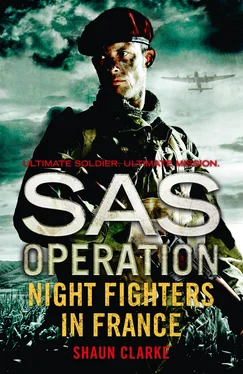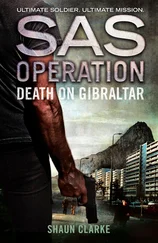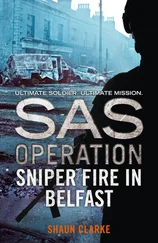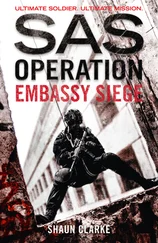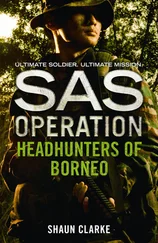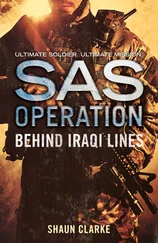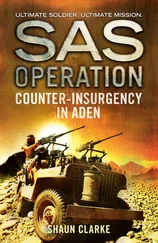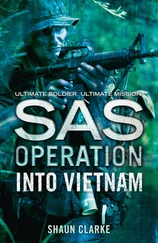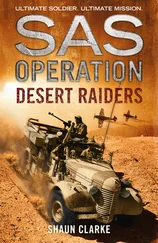Even though German resistance was heavy, by the evening of the first day a bridgehead twenty-five miles wide had been established, forming a continuous front, with American forces in the Cotentin peninsula and just east of the River Vire, and Canadian and British troops on the left flank. To the east, British troops advanced to within three miles of Caen, while to the west US forces penetrated to a depth of five miles south of Colleville and crossed the River Aure to the east of Trévières. Two days later, Isigny, six miles from Carentan, was captured. Carentan itself fell to US troops on the 12th.
Violent fighting broke out around Caen, with both sides changing positions constantly, but the Americans entered St-Sauveur-le-Vicomte on the 16th, reached the main defences of Cherbourg on the 21st and, after fierce fighting, but with the aid of an intensive aerial bombardment and artillery fire, captured the town on the 27th, taking 20,000 German prisoners of war.
By this time, British troops had cut the road and railway between Caen and Villers-Bocage to reach the River Odon at a point some two miles north of Evrecy. A strong bridgehead was established which resisted the counter-attacks of eight Panzer and SS Panzer divisions. When the Germans retreated, the bridgehead was secured and enlarged.
On 3 July, having cleared the north-west tip of the Cotentin peninsula, the US 1st Army advanced in a blinding rainstorm on a wide front south of St-Sauveur-le-Vicomte. By the following day they had captured the high ground to the north of La Haye-du-Puits and, after eight days of fierce fighting, finally captured the town. Simultaneously, other US troops were battling their way up the steep, wooded slopes of the Forêt de Mont Castre and advancing down the Carentan-Périers road to force a passage across the Vire in the direction of St-Jean-de-Daye, which fell on the 8th. By the 11th they were advancing through waterlogged country to take up positions within three miles of the vital German communications centre of St Lô.
British and Canadian forces, meanwhile, had attacked eastwards towards Caen, and early on the 8th, after a concentrated bombardment from heavy and medium bombers, launched an attack that carried them to the outskirts of the town. Supported by sustained fire from massed artillery and British ships, they took the northern part of the town by nightfall.
St Lô fell to the US 1st Army on 18 July after eight days of bloody fighting. Following the capture of the northern part of Caen, the British 2nd Army, under Montgomery, launched an attack southeast of the town. Over 2000 British and American heavy and medium bombers dropped nearly 8000 tons of bombs in an area of little more than seventy square miles, blasting a 7000-yard-wide passage that enabled armoured formations to cross the River Orne by specially constructed bridges and drive strong wedges in the direction of Cagny and Bourguébus.
While this armoured advance was temporarily halted by a combination of determined enemy resistance and violent rainstorms, Canadian troops were successfully clearing the southern suburbs of Caen and British infantry were thrusting out eastwards towards Troarn to clear several villages in the area. A further Canadian attack across the Orne, west of Caen, resulted in the capture of Fleury and the clearing of the east bank of the river for three miles due south of the latter town.
A week after the British 2nd Army’s offensive began, the US 1st Army attacked west of St Lô, captured Marigny and St-Gilles, then fanned out in three columns, west, south and south-west, to capture Canisy, Lessay, Périers and Coutances, and join up with US forces advancing from the east. By nightfall of the 30th, American armour had swept through Bréhal and, the following day, captured Avranches and Graville. Further east, Bérigny was captured.
Aiding the American success were two attacks in the British sector: one by the Canadians down the Caen-Falaise road, the other in the area of Gaumont, where, after a heavy air bombardment, a British armoured and infantry force secured Cahagnes and Le Bény-Bocage. Five more villages, including the strategically important Evrecy and Esquay, southwest of Caen, were captured on 4 August and Villers-Bocage, which was by now in ruins, the next day.
American armoured columns reached Dinan that same week, turned south and, heading for Brest, liberated several Breton towns en route . Rennes, the capital of Brittany, was captured on the 4th and the River Vilaine was reached two days later, sealing off the Brittany peninsula. The fall of Vannes, Lorient, St-Malo, Nantes and Angers soon followed, and US patrols had crossed the Loire by 11 August.
With British and Canadians, plus the 1st Polish Armoured Division, advancing from the north, and the Americans, along with the French 2nd Armoured Division, closing in from the west and south, a large part of the German 7th Army was almost surrounded. Their only escape route – the narrow Falaise-Argentan Gap – was sealed by the Americans advancing from Le Mans, which they had liberated on 9 August.
By 19 August, the Falaise Gap was closed and, after a terrible slaughter of German troops, whose dead choked the village streets and surrounding fields, the sad remnants of von Kluge’s 7th Army were taken prisoner.
Four days earlier, on 15 August, General Eisenhower had taken command of the Allied Expeditionary Force, leaving Montgomery at the head of the 21st Army Group, which consisted of General Dempsey’s British 2nd Army and General Crerar’s 1st Canadian Army. Lieutenant-General Omar Bradley was at the head of the 12th Army Group, comprising General Hodge’s US 1st Army and General Patton’s 3rd Army. The latter was driving towards Dijon as other Allied forces advanced from the south.
To aid the advance of Patton’s 3rd Army, the Allies planned airborne landings in the Orléans Gap, and to soften the enemy before the landings, they decided to drop a squadron of men and jeeps by parachute in the area of Auxerre, central France. The squadron’s task would be to engage in a series of daring hit-and-run night raids against German positions to distract the enemy from the landings taking place elsewhere.
While the Allied advance was under way, the French Forces of the Interior (FFI) were seizing high ground in advance of the American armour and engaging in guerrilla warfare, to harass the Germans and protect Allied lines of communication. In central France, the Maquis – Frenchmen who had fled from the Germans and were living in makeshift camps in the forest – were conducting sabotage missions behind enemy lines. Among their tasks were blowing up bridges, putting locomotives out of action, derailing trains, and cutting long-distance underground communications cables between Paris and Berlin. Montgomery, knowing of these activities, decided that the men chosen for the parachute drop should establish a base and make contact with the Maquis.
The men deemed most suitable for this mission, known as Operation Kipling, were those of C Squadron, 1 SAS, based in Fairford, Gloucestershire. Formed in North Africa in 1941, 1 SAS had already gained a reputation for uncommon daring. That reputation would be put to the test over the weeks to come.
The men crowding into the briefing room in their heavily guarded camp near Fairford, Gloucestershire on 10 August 1944 were not ordinary soldiers. They were men of uncommon ability, members of the Special Air Service (1 SAS), which had been formed in North Africa in 1941 as a self-contained group tasked with clandestine insertion, long-range reconnaissance patrols behind enemy lines, and sabotage and intelligence-gathering missions, often with the Long Range Desert Group (LRDG).
Originally, 1 SAS had been conceived and formed by Lieutenant David Stirling, a former Scots Guard who, having joined No. 8 Commando, was promptly dispatched to the Middle East on attachment to Colonel Robert Laycock’s Layforce. After taking part in many relatively unsuccessful, large-scale raids against German positions along the North African coast, Stirling became convinced that raids with small, specially trained units would be more effective. In the spring of 1941, hospitalized in Alexandria after a parachute accident, he passed the time by formulating his plans for just such a unit, based on the belief that 200 men operating as five-man teams could achieve the surprise necessary to destroy several targets on the same night. Subsequently, with the support of Deputy Chief of Staff General Neil Ritchie, L Detachment, Special Air Service Brigade, was born.
Читать дальше
